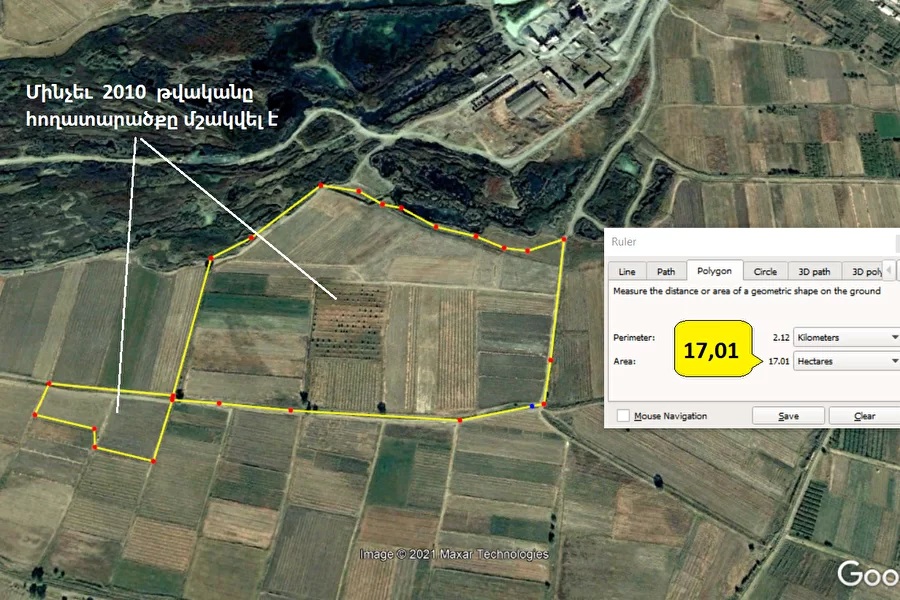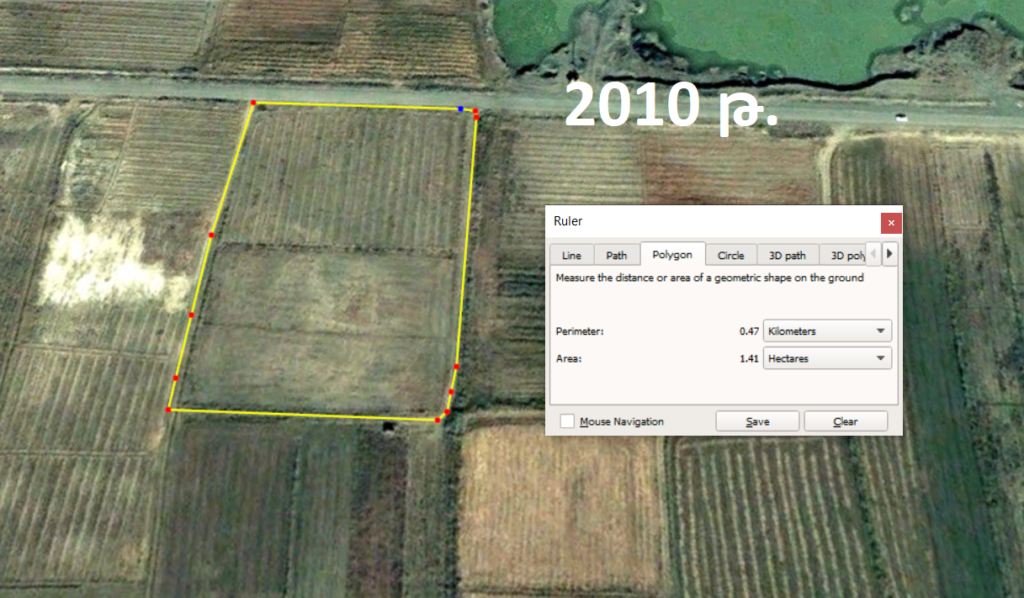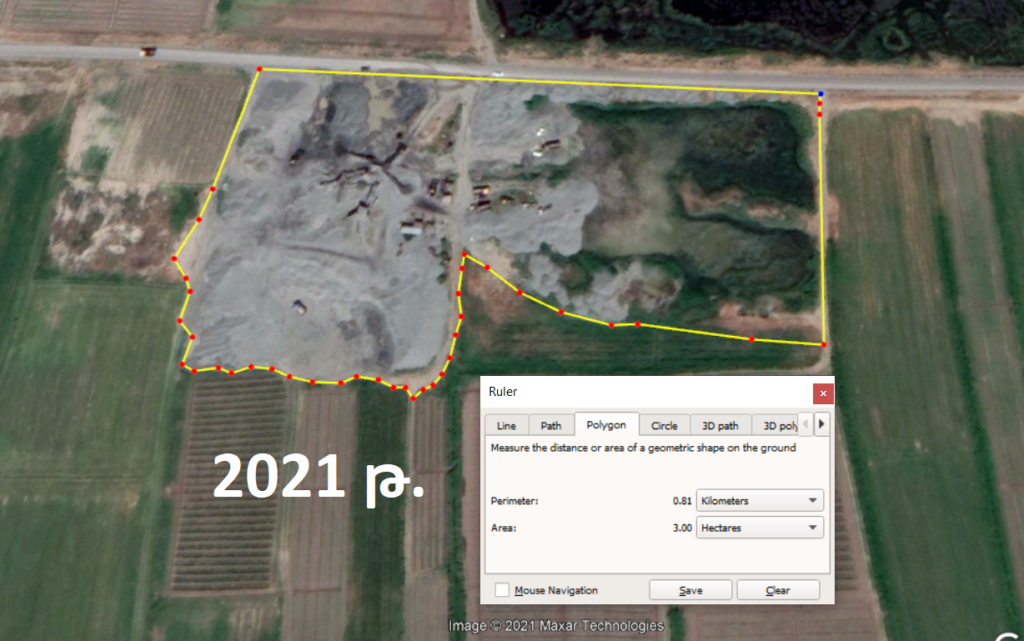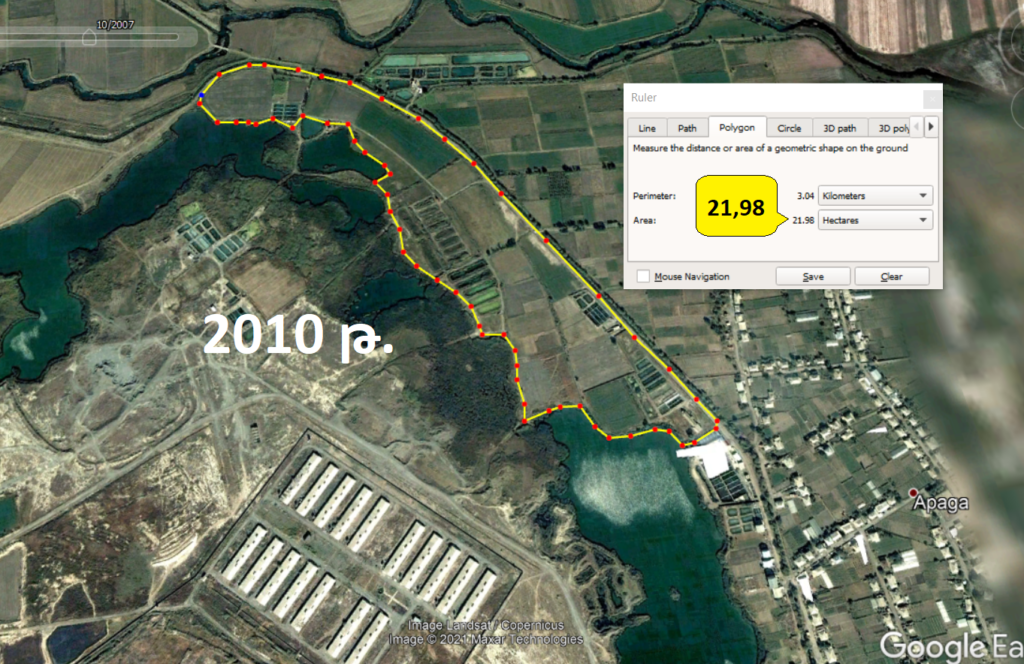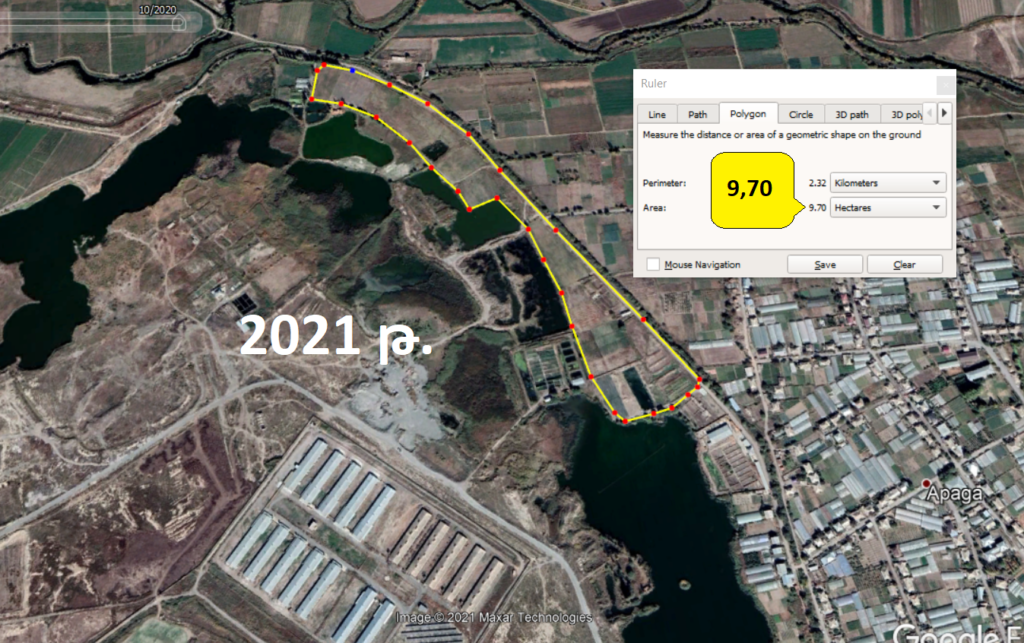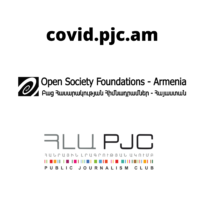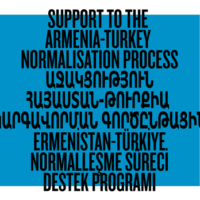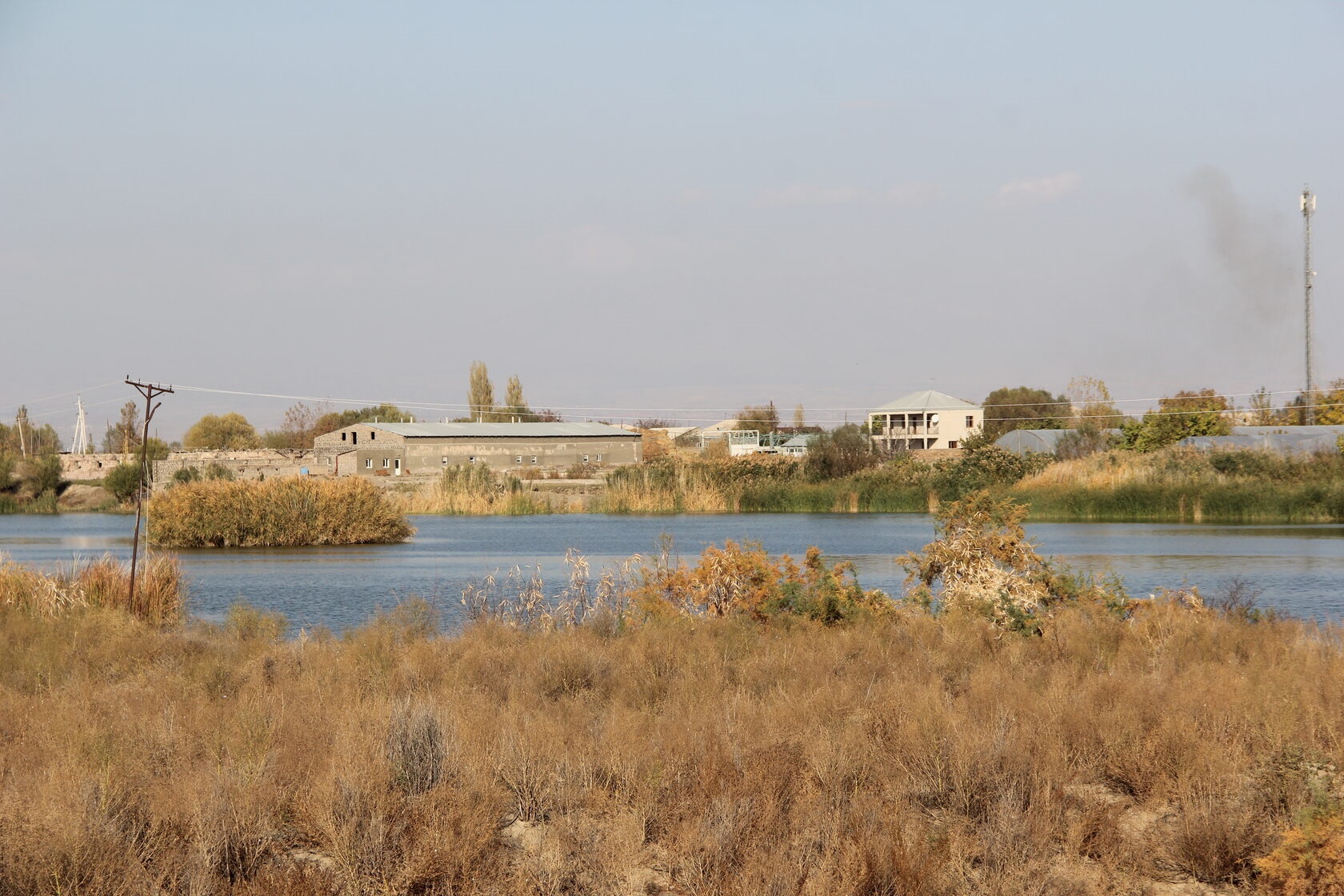
Mining and Agriculture: A Fierce Enmity
- December 5, 2021
- Category: News
The article is available here.
_____________
Argavand resident Hamayak Hovsepyan refuses to sell his land and has little hope that he will be able to keep it for very long. The land’s soil fertility has declined so dramatically that the toiling and all future investments would go in vain.
The problem is that adjacent to Hamayak’s territory, there is a sand screening plant whose delegates often come and offer to buy the farmers’ lands. Many of the farmers agree to sell their lands at high prices. Once the deal has been sealed, excavators enter the territory and turn it into a sand mine.
In just a short period of time, a deep hole appears in the land formerly used for agricultural purposes. The hole is soon filled with water, sucking in the groundwater that ensures the soil moisture of the neighboring lands. As a result, the fertility of the surrounding soil declines, and the landowners are left with nothing else but to sell their only remaining source of income at a much cheaper cost.
The same fate has befallen Hakob Grigoryan, Artur Sargsyan, Ara Gevorgyan, and numerous other residents, to whom the buyers have said, “Your neighbors already sold theirs. Sooner or later, you will have to, too.” Hamayak, intimidated by this menacing exhortation, unreservedly refuses to sell his land saying he would rather leave his land uncultivated than give it away to the mine owner.
There is a sand screening plant operating in the Argavand community of Armavir Region whose proprietors procure lands under different names and turn them into sand mines.
Our investigation has revealed the illegalities committed in the sand extraction business, as well as the damage they cause to local farms, depriving them of the opportunity to cultivate their own land and put food on their tables. Through tax frauds, the illegal exploitation of mines in this area causes big financial losses to the operating budget of these communities and, by extension, the state budget. Based on the cases of three different mining companies, we will try to present the illegalities committed in the industry of sand mining and the harm they incur to the farms, communities and the state budget.
“TNASHIN ASHOT” LLC
According to the data provided by the RA Ministry of Territorial Administration and Infrastructure, “TNASHIN ASHOT” LLC acquired a mining permit in 2012 with 10 years of validity for running mining operations in the Tandzut community of Armavir Region on 4.81 hectares of land area. The company, however, has leased only 3 hectares for mining exploitation. On the 4.75 hectares owned by the company in Argavand, a sand screening plant has been put up.
In the same community, the company has been purchasing agricultural lands lying adjacent to the plant under different names and turning them into mines.
The maps clearly indicate that in these 2 areas alone, 36.49 hectares of agricultural land have been turned into a water area and swamps. The outline of the area to soon share the same fate can also be observed on these maps. The lands here have been completely dehydrated, making cultivation an economically fatuous endeavor. The villager has no choice but to ask the farmer to buy his land.
While exploiting the subsoil under the name of different individuals, these business entities are convinced that such actions are entirely within their ownership rights. However, the first clause of Article 48 of the RA Code on Lithosphere distinctly states the scope of viability for such businesses.
In Argavand community alone, “Tna-Shin Ashot” LLC has turned 17.2 hectares of agricultural lands into swamps without even formally changing the purpose of land use. As per the criteria set out in the RA Government Decree N 1746-Ն, the company has inflicted a financial harm worth 41.7 million drams. Were the company exploiting these lands lawfully, it would have to pay 1% of the annual cadastral value of the land as land tax.
Deputy Mayor of the community Arman Gorgyan says that by the sole changing of the purpose of land use, 2 million 780 thousand drams would have been added to the local budget for each hectare. The annual land tax for renting industrial land is 26,400 drams. This means that the company has failed to pay 41.7 million drams to the budget of Argavand for the change of land use purpose of 15 hectares and 396 thousand drams annually for rent.
To our question what projects the community could have implemented with the missing sum, Deputy Mayor Arman Gorgyan said, “Much could have been done with that amount in a community with an annual budget of 20 million drams. But unfortunately, that amount does not exist. And I cannot tell why why.”
We were unable to snatch clarifications from “Tnashin Ashot” LLC. In fact, no entity is registered at the compay’s official address. Upon visiting the mine, they told us the director is not here and that we are prohibited to enter the area. We didn’t give up and decided to call the proprietors of the plant- from the mine’s director to the founder- -but we were unable to reach them.
“AVAZ PLUS”
As stated on the official website of the Ministry of Territorial Administration (ICT) of Armenia, on July 30, 2018, this company acquired a permit for mining sand and gravel mixture on 4.05 hectares of land in the “Tandzut 1” precinct of the Tandzut community in Armavir region and consequently signed a contract (Number: Պ-588) for a 25-year period. It should be noted that in its data, the Ministry of Territorial Administration does not make any mention of the purpose of use.
According to Grisha Khurshudyan, secretary of the Municipality of Tandzut, “Avaz Plus” LTD signed a lease agreement with the community for 4.05 hectares of agricultural land, but it did not possess rights for mining as it never formally changed the land’s purpose of use. The secretary also noted that by the decree (No. 130) of the chief of the community issued on November 23, 2018, an administrative penalty worth 100 thousand drams was imposed on “Avaz Plus” for conducting mining on agricultural lands.
According to Gor Melikyan, Head of the Nature Protection Division of the Department of Agriculture and Nature Protection of Armavir Municipality, the operations of “Avazplus” have been suspended due to the company’s failure to change the land’s purpose of use.
In order to check the validity of this information, we visited the company’s sand screening plant located in Yeghegnut Community. The plant operates as usual, and there were trucks supplying sand and gravel mixture to the plant.
In fine, just for operating a mine without changing the land use purpose, “Avazplus” has incurred a harm worth 21 million 120 thousand drams to Tandzut community. In case of changing the land use purpose when it was due, the company would have had to pay 1% of the annual cadastral value of the land as land tax.
“Avazplus” LLC also has issues with the community of Yeghegnut, which is where its sand screening plant is located. According to the secretary of staff of Yeghegnut municipality Sedrak Aleksanyan, 10 years ago, the company purchased 1.41 hectares of agricultural land from Yeghegnut resident Misha Manukyan under a sales contract. Then, after paying the community a good 1.4 million drams, it changed the purpose of use of 0.2 hectares of the land and installed sand screening equipment there. According to the secretary, the company annually pays a total of 6400 drams of land tax, of which 1400 drams is for 1.41 hectares of agricultural land and 5000 drams is for the 0.2 hectares of industrial land.
We visited the company’s sand washing plant where we were told by the employees that they were not authorized to answer any questions and that it would be necessary to contact the director. They claimed they did not know the director’s location and his phone number. They advised us to visit later. During our third visit, the employee who could not even remember his own name said, “The right thing is not to disturb them at all.” Our visit to the mining site made it obvious that the plant occupies far more than just 0.2 hectares of land area, which the maps come to prove.
The maps clearly show that the company’s sand screening plant occupies over 3 hectares of land, of which only 0.2 hectares are used for industrial purposes. The 1.21 hectares are the company’s property, while the remaining 1.59 hectares, as the chief of the community Razmik Margaryan claimed, was procured in agreement with the owners.
The company has inflicted upon the community a financial harm worth 8.47 million drams due to its failure to change the lands’ purpose of use. While the mayor of Tandzut community saw a need to impose a pro-forma penalty worth 100 thousand drams, the head of Yeghegnut community did not bother to care for the formality at all.
It was during the tenure of Razmik Margaryan as head of community when the plant permeated the administrative territory of the village. He claimed he did not remember the name of the organization and that the plant was operating on its legal territory. And the reason why he had not imposed any fines were the problems with his tenure: first, his administrative authority was terminated, and then he was reinstated by court order. Now, the opposition is preventing him from running his everyday business.
The company’s secretary of staff Sedrak Aleksanyan said that the sorting plant belongs to “Avazplus” LLC, which pays 1400 AMD annual land tax for 0.2 hectares of industrial land and 5000 AMD for the remaining 1.2 hectares.
“SAHAK-1” LTD
As retrieved from the official website of the Ministry of Territorial Administration (ICT) of Armenia, “SAHAK-1” received a 45-year-long mining permit in 2016 for the exploitation of 29.5 hectares of land in the Apaga Community of Armavir Region. As the community’s chief Petros Avagyan claimed, a lease agreement for 45 years was signed with “Sahak-1” LLC. He assured that the community has established control over the territory to make sure the proprietor does not exceed the mine’s boundaries. At least the mine’s operations have not caused any problems connected with the irrigation.
This area is exploited by “SAHAK-1” LLC. Due to the company’s operations, over a dozen hectares of agricultural land have become derelict as besides the water areas, there are other lands exploited by the company. In the entire course of our filming, the company’s excavators were working in a dry area loading trucks with sand.
As a result of its operations, “Sahak-1” LLC has made 45 hectares of Apaga’s agricultural lands entirely barren. According to the criteria defined in the N 1745-Ն decree of the government of the Republic of Armenia, the financial harm caused by the company in this area amounts to 396.0 million drams.
We managed to get in touch with Gurgen Davtyan, the director of “Sahak 1” LLC, who said, “We operate exclusively in the land area formally allotted to us and we do not make infringements. I do not know who or what did it and when it was done. We’re operating as usual and we do not harm anyone. This much I can say to you.”
Conclusion
Farms are the first to suffer loss because of the unlawful operations of mining companies. This subsequently deprives many families of their last remaining source of income. Communities and the country’s budget are no less affected as the fraudulent products of these companies are also concealed from the tax authorities.
It would be insensible to think that the leaders of these communities are unaware of the exploiters’ infringements committed right before their eyes. If nothing else, they have the authority to levy administrative penalties, terminate their lease agreements, or refer to the relevant inspection bodies to prevent the unlawful activities of these businesses.
Local municipalities, however, are in no capacity to control the issuing of permits, the unlicensed industrial use of agricultural land, or the companies’ overstepping the mine boundaries for that matter.
In the region of Armavir, a total of 31 permits have been issued to different businesses. In particular, 16 permits were granted for the mining of sand, 6 for the extraction of tufa stone, 6 for basalt, 2 for andesite and 1 for gypsum.
And in order to better show the total harm caused to the agricultural lands of Armavir by these mines, we would like to emphasize that due to the unlawful mining activities occurring in the territory, in the last 10 years alone, a total of 527 hectares of land area in 14 communities have become barren and subject to recultivation.
As a matter of fact, the proprietors of these mines are not random people. They are either influential people or former and current officials in spite of the fact that the mines are mostly registered in the names of their relatives (and in some cases- family members).
“Tnashin Ashot” LLC, for instance, belongs to former MP Nahapet Gorgyan (also known as “Novo”). The company’s director is Mnatsakan Hovhannisyan and its founders are former MP Nahapet Gorgyan and his nephew Bagrat Gorgyan with equal shares.
The founders of “Avazplus” LLC are Tigran Nazaryan, Harutyun Yandyan (each holding 33% of the shares), and Gor Arustamyan with a good 34%. Gor works for Barsegh Beglaryan, the owner of the company Flash (also known as Fleshi Barsegh), who the villagers believe is the real owner of the mine.
According to the villagers, the “Sahak 1” used to belong to the former mayor of the Apaga community Artashes Barseghyan who sold the company to Svetlana Simonyan in 2018 and moved to the United States for good.
Regardless of who the owners of these mines are, there are two things the farmers are sure of: they have the right to cultivate their own land and that the defender of their rights must be the head of the community.
Argavand resident Ara Gevorgyan who bought a hectare of land 13 years ago has now willy-nilly become a neighbor of the mine. He claims villagers alone cannot tackle this problem. He thinks the head of the community is elected to protect the interests of the community’s residents and not to cater to those of the rich- which, he believes, is exactly what the mayors of these communities are busy doing for their own benefit. The residents of Argavand are hopeful that once the communities have been enlarged, the new leaders will have more leverage to use their authority to weigh the resources and opportunities of the community correctly and to govern more effectively.
_____________
This fact-checking article was prepared within the framework of the “Media literacy for the disadvantaged in society” project implemented by DVV International Armenia and Public Journalism Club with the support of the German Ministry of Foreign Affairs.




